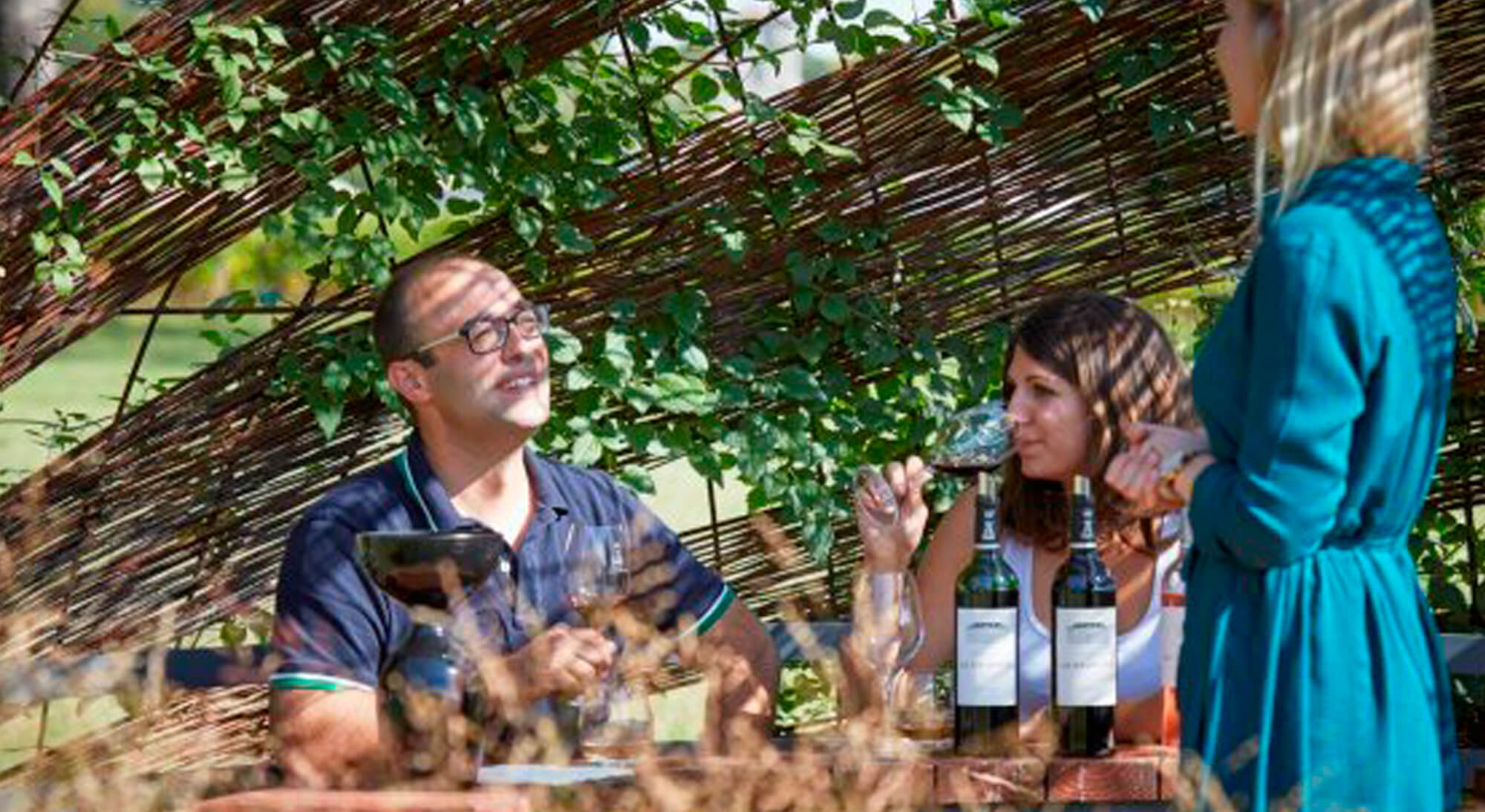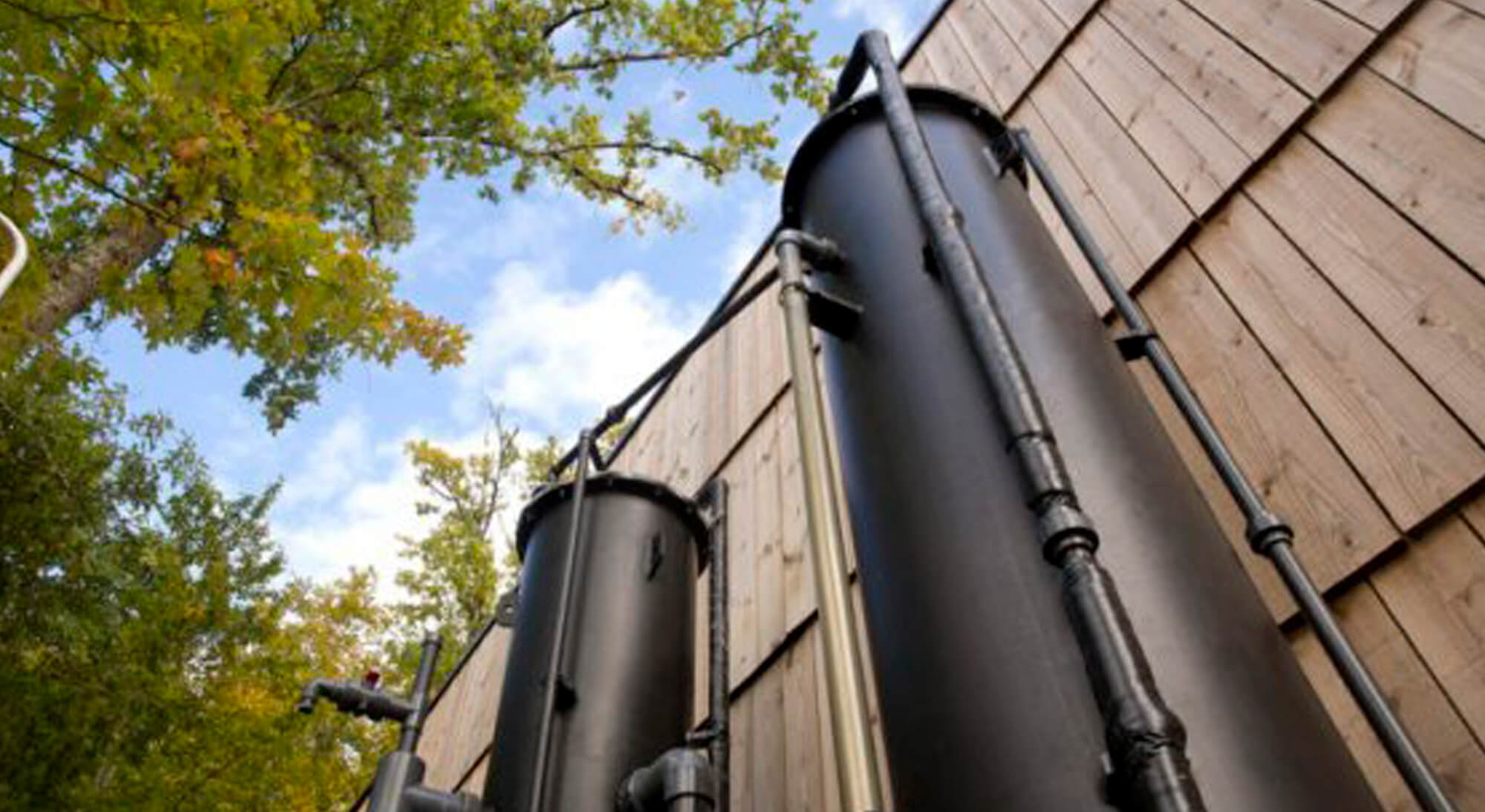In 2008, Bordeaux carried out the first Carbon Assessment of the industry, finding that it produced 840,000 tonnes equivalent CO2 from three main sources; inputs (plastic, glass, winemaking products, etc.), transport and energy. The following carbon assessment in 2013, showed progress; a 9% reduction in greenhouse gas emissions over the five years to 770,000 tonnes eq. CO2, this despite strong export activity and continued investments in wine quality, such as energy-greedy temperature control.
In 2016, the 2020 Climate Plan set the objective of a 20% overall reduction in greenhouse gases, in water use, in energy use and a 20% increase in renewable energies. Priority actions, where the biggest effect could be made were highlighted, included lighter bottles, composting of vine clippings and effluents, recycling and promoting rainwater harvesting.
In 2019, to help producers attain these goals, the CIVB (Bordeaux Wine Council) introduced an online tool for winegrowers and merchants to assess their own progress, against the sector averages. More importantly, it suggests actions to reduce emissions based on the results.
Global vision, individual action
Wineries are also focused on sustainable actions in the vineyard. They don’t produce wine in glorious isolation; appellations are working together, such as the Margaux appellation initiative ‘ Margaux, Terroir de Biodiversité’, and Saint Emilion introducing sustainable criteria into appellation rules. But it is down to individual vineyards to implement change.
Over 65% of the region’s vineyards have sustainable, organic and biodynamic agriculture certifications. The objective is 100%.
Planting trees is one of the most affordable, easy and efficient ways to reduce the carbon footprint of a vineyard, whilst increasing biodiversity.
The Agro forestry movement encourages planting trees in the vineyards as well as hedgerows around them. Many Best Of Wine Tourism vineyards, such as Château Angludet and Chateau d’Eyran are doing just this. At Château de Ferrand, ten hectares of copses, thickets and meadows surround the estate where all power cables and telephone lines are buried underground.
Wine tourism is now an integral part of most Bordeaux vineyard operations and their marketing strategy and specialised tours are a perfect way for producers to share their passion for their terroir and how they protect it.
Most Bordeaux vineyards are family run properties, with an innate respect for the land that is their home and they are keen to share this with visitors. The wine tourism formula in Bordeaux has never been based on a tasting room experience followed by a wine purchase.
Visitors are taken into the vineyard, amongst the vines rather than only in cellars and tasting rooms. It is an in-depth experience, an exchange with the winemaker to understand the place, people, passion and history behind the product. That’s why I always advise wine tour clients to allow at least 90 minutes for a visit to a Bordeaux vineyard.
At Château Fourcas Hostens the tastings take place in the park of the Chateau and at Château de la Dauphine in the vines on the slopes high above the Dordogne Valley.

Photo credit: Château de la Dauphine
Increased awareness
Tourism plays an important role in creating a connection and building a relationship with the client, whether they already know the property and its wines, or they are getting to know them for the first time.
Consumers want that authentic connection too. Ethical and environmental concerns are more and more part of a purchasing decision for consumers. Contributing to the protection of the planet, adopting more ethical and responsible lifestyles, and being more attentive to the origin and provenance of the products they buy are important concerns for an increasing number of consumers.
What better way to discover the carbon footprint of the wine than strolling through the vines? A visit creates trust based on transparency, consumers can feel good about their purchase not only because the wine is delicious, the chateau beautiful and wine maker charming but the carbon footprint is low and the environmental credentials are high.
Times have changed
With Covid, wine tourism has changed; there are less visitors, mainly locals, with few foreign visitors. There are virtual solutions; Chateau Guiraud for example has joined the on line wine experience site ” Vivant ” This may reduce air miles and the carbon footprint of the business in the short term but it is not sustainable for vineyards. Wine can offer travel in a bottle, but wineries want their visitors back. Wine tourism is about welcoming wine enthusiasts from around the world to the very heart of the vineyard.
If we can reduce the carbon footprint of wine production, can we also reduce the carbon footprint of wine tourism? Some best of wine tourism winners are already taking the initiative with visits in an electric golf cart at Château Angludet or on bicycles at Château Marquis de Terme.
Stay awhile
Encouraging guests to stay longer, see more, and share more is one way to get the most out of those air miles. Properties such as Château Le Pape, Château Beauregard, Château de Ferrand and Château Soutard are amongst many that offer beautiful guest rooms for visitors. Others, such as Chateau Guiraud and Château Léognan have opened restaurants and at Chateau de Cérons and Château Lamothe Bergeron you can picnic in the park – that reduces the air miles from cellar to lip!
The Great Wine Capitals have their own Sustainable Wine Tourism Practices Award to reward leaders. Les Vignerons de Tutiac is the latest property to win the coveted award. As Bordeaux’s leading cooperative winery, it is committed to an Agri Confiance® approach with the “HVE” (Haute Valeur Environmental) certification. Visitors can tour their experimental vineyard and taste their Zero Pesticide Residue (ZRP) label. The ‘Green Tour’ at Château de la Dauphine, in Fronsac, explains the ecological philosophy of the property, certified organic in 2015 and now biodynamic.
Green initiatives in the vineyard easy to see and understand, but the carbon footprint doesn’t stop at the cellar door. Château d’Eyran has built a contemporary, eco-friendly cellar to maximise light and economise energy and insulated with ecological and local bio-bricks. The wooden cladding, terracotta tiles and paint using natural pigments all help it to blend into and respect the environment.

Photo credit: Château Smith Haut Lafitte
Smith Haut Lafitte is the Bordeaux pioneer in Carbon capture. Their ‘Stealth ‘cellar built in 2013 to minimise the environmental impact is low energy, constructed from local materials by local builders in an old gravel quarry. It is so green it was built around existing trees, the moss and shrubs on the roof blend into the environment and increase insulation. Thick concrete walls, natural humidity and geothermal heat exchangers maintain cool temperatures. Solar panels help power the cellar and CO2 from fermentation is recovered to make bicarbonate of soda, producing a potential 90 tonnes.
These Best Of Wine Tourism Bordeaux winners offer wine tourists a low carbon experience of sustainable wine growing and wine production, showcasing the latest research and developments alongside traditional practises to maintain and share their unique environment.
Cover photo credit: Château Guiraud